Comments / Questions (80)
![]() Melissa wrote:
Melissa wrote:
Hi! Could someone explain to me what the idea behind the short rows is (I am at neck part)? And is it possible to just continue in the round without the short rows? Thanks in advance!
07.10.2022 - 22:12DROPS Design answered:
Dear Melissa, short rows are used to shape the back of the neck better and it's not too tight on the back. You could omit these rows and work the yoke directly, Happy knitting!
09.10.2022 - 19:12
![]() Raija wrote:
Raija wrote:
Hei, kannattaisko neule kastella ennen käyttöä, kutoessa lähtee paljon nukkaa, auttaisiko?
24.09.2022 - 12:19DROPS Design answered:
Hei, langan värikartasta löydät muutaman vinkin: Melody-langan värikartta
29.09.2022 - 18:38
![]() Emilia wrote:
Emilia wrote:
Hej! När man stickar förkortade varv (halsringningen) ska man öka till raglan på varje varv, alltså både när man stickar rät och avig, eller bara de räta varven? Tacksam för svar
22.09.2022 - 19:27
![]() Emilia wrote:
Emilia wrote:
Hej! När man stickar förkortade varv, ska man lyfta en maska när man vänder arbetet?
22.09.2022 - 17:55DROPS Design answered:
Hej Emilia. Ja det kan du göra om du tycker det blir finare. Mvh DROPS Design
23.09.2022 - 10:26
![]() Lærke Nielsen wrote:
Lærke Nielsen wrote:
Hej Strikkes opskriften i to tråde? Mvh. Lærke :-)
13.09.2022 - 22:01DROPS Design answered:
Hej Lærke. Nej, den stickas med 1 tråd. Mvh DROPS Design
14.09.2022 - 14:41
![]() Randi wrote:
Randi wrote:
Hej, ang mit spørgsmål fra d 23/7; jeres svar besvarer slet ikke spørgsmålet… jeg spørger ikke til mål af fuld længde, kun til bærestykket inden deling. Øverst i afsnittet står, at bærestykket skal måles fra mærke midt bag, men nederst i afsnittet står der, at bærestykket efter alle raglanudtagninger skal måles fra midt foran..?? Altså: skal bærestykkets længde måles fra nakken eller fra halsen..?? Der er jo ca 2 cm forskel pga vendepinde i nakken. Vh Randi
06.09.2022 - 10:21DROPS Design answered:
Hej Randi, Bærestykket skal måles fra midt foran :)
06.09.2022 - 14:36
![]() Hannah wrote:
Hannah wrote:
Do you have a size chart available please?
01.09.2022 - 18:22DROPS Design answered:
Dear Hannah, you can find the measurements schematic under the pattern instructions; you can see here how to interpret it: https://www.garnstudio.com/lesson.php?id=24&cid=19. Happy knitting!
01.09.2022 - 23:36
![]() Solfrid wrote:
Solfrid wrote:
Spm vedr lengde: I oppskriften står det at genseren måler ca 60 cm (str XL) fra skulderen og ned, men når jeg legger sammen opplysningene i oppskriften så får jeg ca 55 cm; arbeidet måler 28 cm fra midt bak etter siste raglandøkning, deretter deles arbeidet og man skal strikke 21 cm til mål fra deling, og så strikke 6 cm vrangbord. (28 + 21 + 6 = 55 cm) - er det noe jeg ikke har fått med?
29.08.2022 - 15:43DROPS Design answered:
Hej Solfrid, har du talt de sidste cm med fra raglanstarten og op til skulderen. Prøv gerne blusen, det er fordelen når man strikker ovenfra og ned :)
31.08.2022 - 13:24
![]() Ewelina wrote:
Ewelina wrote:
Witam serdecznie. Mam tylko pytanie czy wykonując rzędy skrócone dodaje oczka na reglan na prawej i na lewej strony robótki? czy jednak tylko na prawej stronie ? Oglądałam filmik pomocniczy i tam jest pokazane by dodawać oczka również na lewej stronie. pozdrawiam .
26.08.2022 - 01:23DROPS Design answered:
Witaj Ewelino, z opisu wyraźnie wynika, że w rzędzie na lewo (rzędy skrócone) nie są dodawane oczka na reglan. Jest albo pomyłka we wzorze, albo na nagraniu. Stawiam raczej na nagranie. Wysłałam zapytanie i czekam na korektę. Dziękuję za zwrócenie uwagi na problem. Pozdrawiamy!
26.08.2022 - 08:58
![]() Edel wrote:
Edel wrote:
Jeg lurer på det samme som Aina, det svaret som er gitt over svarer jo ikke på spørsmålet men på noe annet. Hva vil det si å starte 3 m før det tredje merket, hvordan kan jeg starte der? og Forstår det heller ikke etter å ha sett videoen om forkortede pinner. Kan dette trinnet eventuelt sløyfes (og gå rett på bærestykket)?
19.08.2022 - 23:01DROPS Design answered:
Hei Edel. Etter du har strikker omgangen der det settes merker, klippes tråden og det strikkes nå en forhøyning bak. Det skal nå startes (fra retten) 3 masker før 3. merke og det strikkes frem og tilbake = forkortete pinner/forhøyning. Det strikkes over 3. merke, så 4. merke, så 1. merke og så 2. merke før arbeidet snur. Ved å følge oppskriften vil man få like mange pinner over "bakstykket". Når alle forkortete pinner er strikket, klippes tråden og man begynner midt bak igjen. Om du ikke ønsker en forhøyning bak, kan du strikke en omgang med raglanøkningne som er forklart under HALSRIGNING, og deretter starter du på BÆRESTYKKE. mvh DROPS Design
22.08.2022 - 13:09
Blueberry Cream Sweater#blueberrycreamsweater |
|
 |
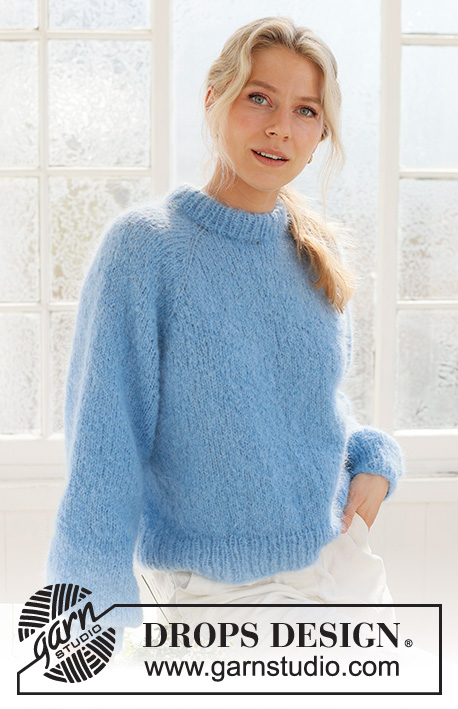 |
Knitted jumper in DROPS Melody. The piece is worked top down, with raglan and double neck. Sizes S - XXXL.
DROPS 231-57 |
|
|
------------------------------------------------------- EXPLANATIONS FOR THE PATTERN: ------------------------------------------------------- RAGLAN: Increase 1 stitch on each side of the stitches with a marker (8 stitches increased on the round). Increase 1 stitch by making 1 yarn over; on the next row/round work the yarn overs twisted to avoid holes. Then work the new stitches in stocking stitch. DECREASE TIP (mid-under sleeves): Start 3 stitches before the marker, knit 2 together, knit 2 (marker sits between these 2 stitches), slip 1 stitch as if to knit, knit 1 and pass the slipped stitch over the knitted stitch. ------------------------------------------------------- START THE PIECE HERE: ------------------------------------------------------- JUMPER - SHORT OVERVIEW OF THE PIECE: The neck and yoke are worked in the round with circular needle, top down. The yoke is divided for the body and sleeves and the body is continued in the round. The sleeves are worked in the round with double pointed needles/short circular needle. DOUBLE NECK: Cast on 68-72-76-80-80-84 stitches with DROPS Melody, using a short 4.5 mm and a short 6 mm circular needle held together. Pull out the needle size 6 mm and continue with size 4.5 mm (this makes the cast-on edge elastic). Work rib in the round (knit 1, purl 1) for 9 cm. Fold the neck double to the inside – work the next round of rib as before, working every other stitch together with every other stitch on the cast-on edge. Change to circular needle size 6 mm On the next round insert 4 markers as described below. Each marker is inserted in a knitted stitch and will be used when increasing to raglan. Insert a marker thread at the beginning of the round = approx. mid-back. Work the next round as follows from the marker thread: Knit 10-10-12-12-12-14, make 1 yarn over, insert marker 1 in the next stitch, knit this stitch, make 1 yarn over, knit 15 (sleeve), 1 yarn over, insert marker 2 in the next stitch, knit this stitch, 1 yarn over, knit 17-19-21-23-23-25 (front piece), 1 yarn over, insert marker 3 in the next stitch, knit this stitch, 1 yarn over, knit 15 (sleeve), 1 yarn over, insert marker 4 in the next stitch, knit this stitch, 1 yarn over, knit 7-9-9-11-11-11 = 76-80-84-88-88-92 stitches. Knit 1 round, with the yarn overs knitted twisted. Cut the strand. NECK-LINE: Now work a neck-line with short rows as follows. Start from the right side, 3 stitches before marker 3 (i.e. on the left-hand side of the front neck, when garment is worn), knit until you are 3 stitches past marker 2 (= right-hand side of the front neck) – AT THE SAME TIME on this row increase to RAGLAN – read description above. Turn, tighten the strand and purl back from the wrong side to 7 stitches past marker 3. Turn, tighten the strand and knit to 7 stitches past marker 2 – remember to increase to raglan. Turn, tighten the strand and purl to 3 stitches past marker 3. Cut the strand and work the yoke as described below. YOKE: Start at the marker thread mid-back and work stocking stitch in the round over all stitches. AT THE SAME TIME continue to increase to raglan every 2nd round until you have increased a total of 8-10-12-14-20-22 times (including the increases on the short rows). Continue with stocking stitch and increases to raglan, but every second increase, increase only on the body (4 increased stitches); i.e. increase every 2nd round on the body and every 4th round on the sleeves. Increase like this 8-8-8-8-4-4 times on the body (4-4-4-4-2-2 times on the sleeves). It has been now increased a total of 16-18-20-22-24-26 times on the body and 12-14-16-18-22-24 times on the sleeves. After the final increase there are 180-200-220-240-264-284 stitches. The piece measures approx. 20-23-25-28-30-33 cm measured mid-front; continue working, if necessary, to the correct length. On the next round divide for the body and sleeves as follows: Work 29-31-35-37-41-45 stitches as before (approx. ½ back piece), place the next 35-39-43-47-51-55 stitches on a thread for the sleeve, cast on 12-12-12-14-14-16 stitches (in side under sleeve), work 55-61-67-73-81-87 stitches (front piece), place the next 35-39-43-47-51-55 stitches on a thread for the sleeve, cast on 12-12-12-14-14-16 stitches (in side under sleeve), work the last 26-30-32-36-40-42 stitches (approx. ½ back piece). The body and sleeves are finished separately. The body is measured from here! BODY: = 134-146-158-174-190-206 stitches. Work stocking stitch in the round for a further 23-22-22-21-21-20 cm. Change to circular needle size 4.5 mm. Work rib (knit 1, purl 1) for 6 cm. Cast off. The jumper measures approx. 54-56-58-60-62-64 cm from the shoulder down. SLEEVES: Place the 35-39-43-47-51-55 stitches from the thread on the one side of the piece on double pointed needles/short circular needle size 6 mm and knit up 1 stitch in each of the 12-12-12-14-14-16 stitches cast on under the sleeve = 47-51-55-61-65-71 stitches. Insert a marker in the middle of the new stitches under the sleeve. Allow the marker to follow your work onwards; it is used when decreasing under the sleeve. Start at the marker and work stocking stitch in the round. SIZES XL-XXL-XXXL: When the sleeve measures 4-4-4 cm from the division, decrease 2 stitches under the sleeve – read DECREASE TIP. Decrease like this every 15-10-10 cm a total of 2-3-3 times (do not decrease in sizes S, M and L) ALL SIZES: = 47-51-55-57-59-65 stitches. Work until the sleeve measures 39-36-35-32-31-28 cm from the division. Knit 1 round where you decrease 15-17-19-19-19-23 stitches evenly spaced = 32-34-36-38-40-42 stitches. Change to double pointed needles size 4.5 mm. Work rib (knit 1, purl 1) for 6 cm. Cast off. The sleeve measures approx. 45-42-41-38-37-34 cm. Work the other sleeve in the same way. |
|
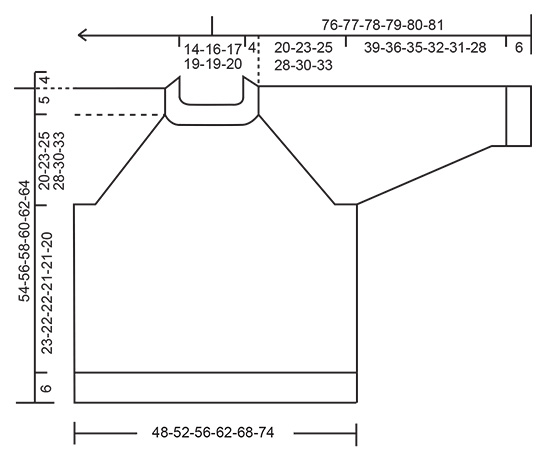
|
|
Have you finished this pattern?Tag your pictures with #dropspattern #blueberrycreamsweater or submit them to the #dropsfan gallery. Do you need help with this pattern?You'll find 30 tutorial videos, a Comments/Questions area and more by visiting the pattern on garnstudio.com. © 1982-2025 DROPS Design A/S. We reserve all rights. This document, including all its sub-sections, has copyrights. Read more about what you can do with our patterns at the bottom of each pattern on our site. |
|







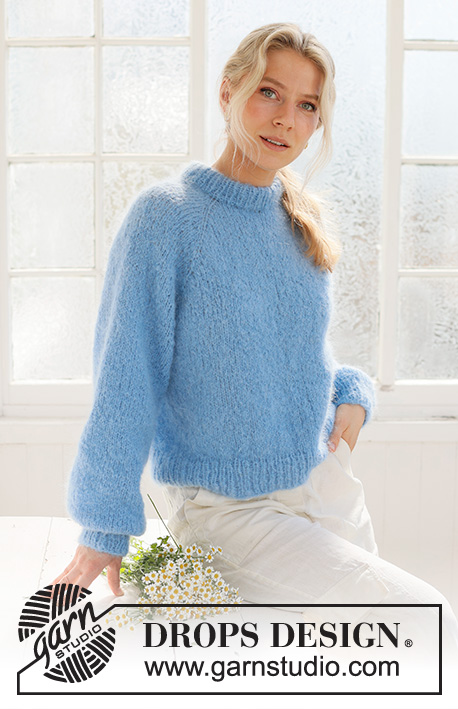
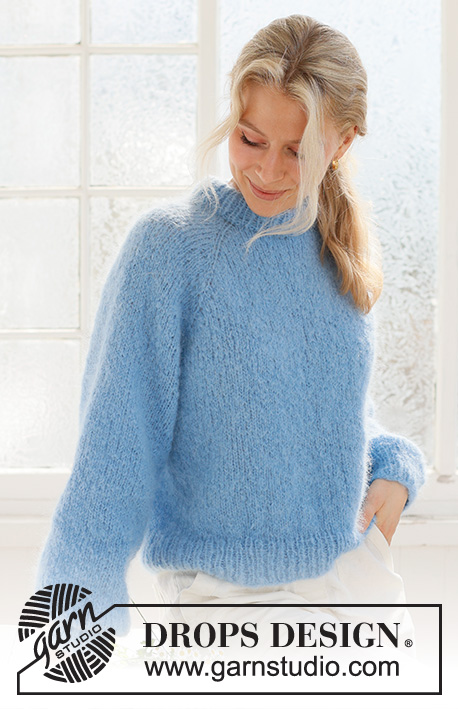
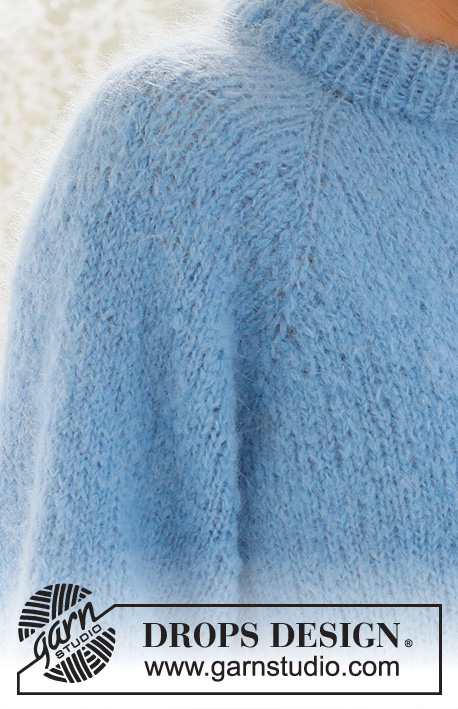
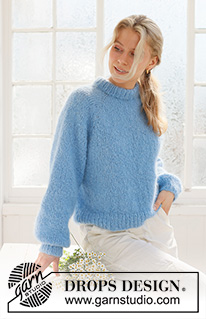
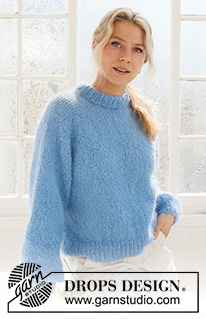
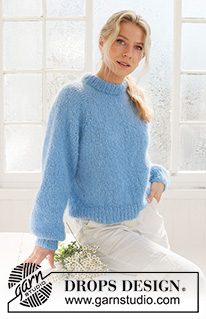
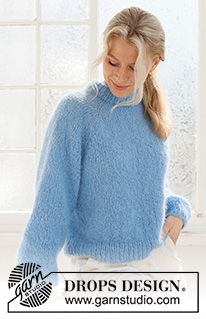
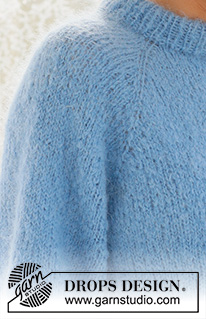
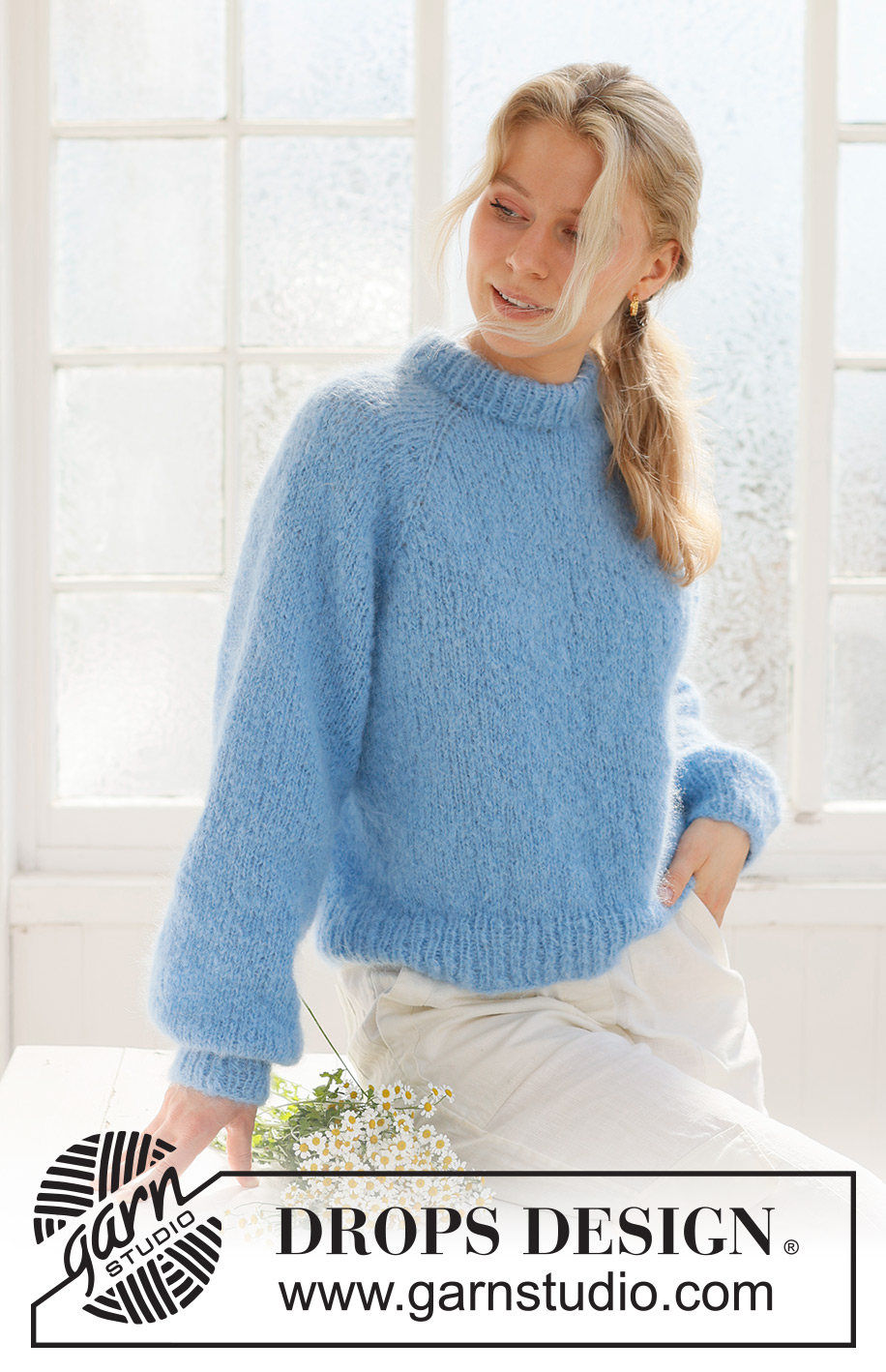
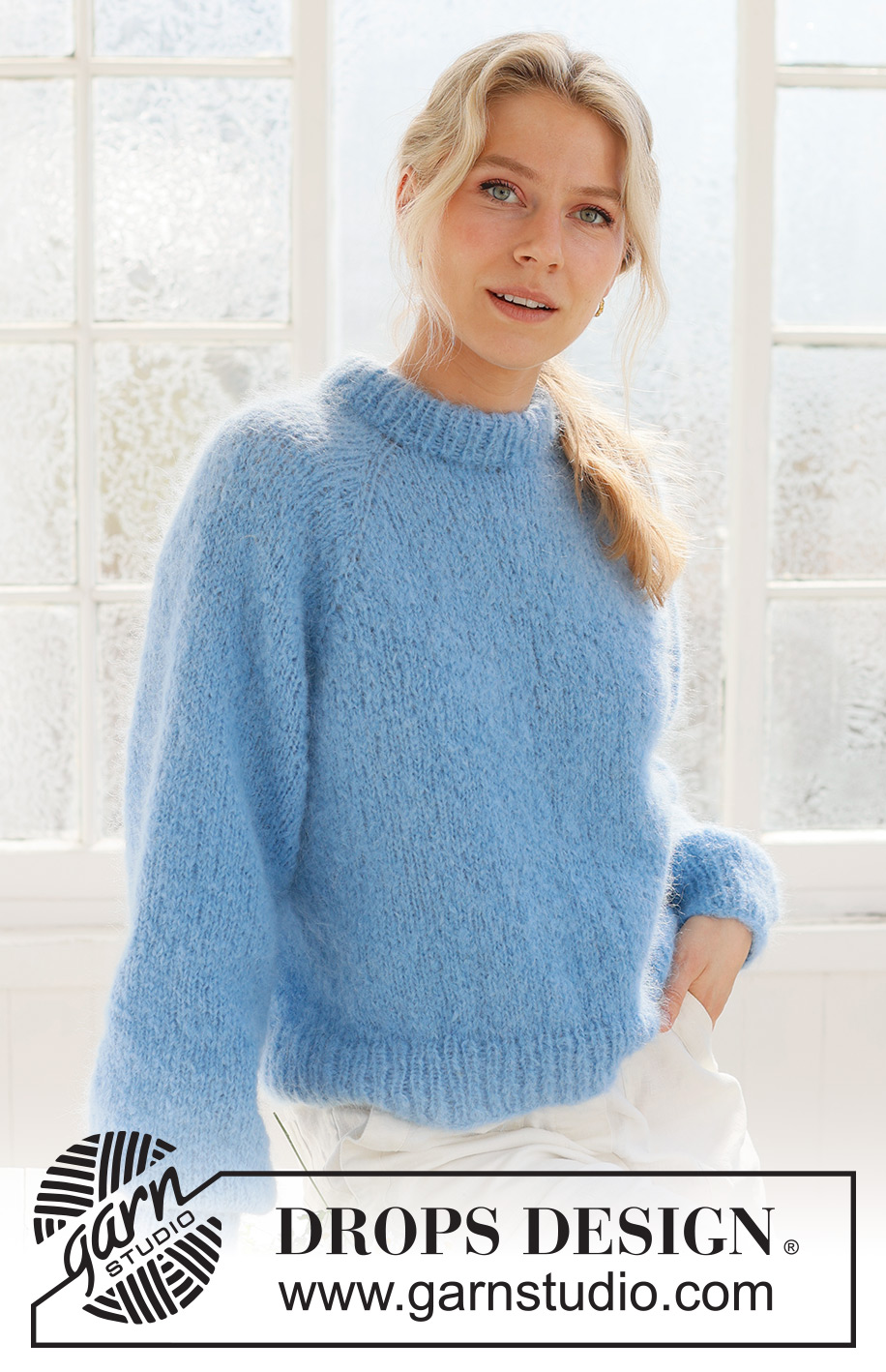
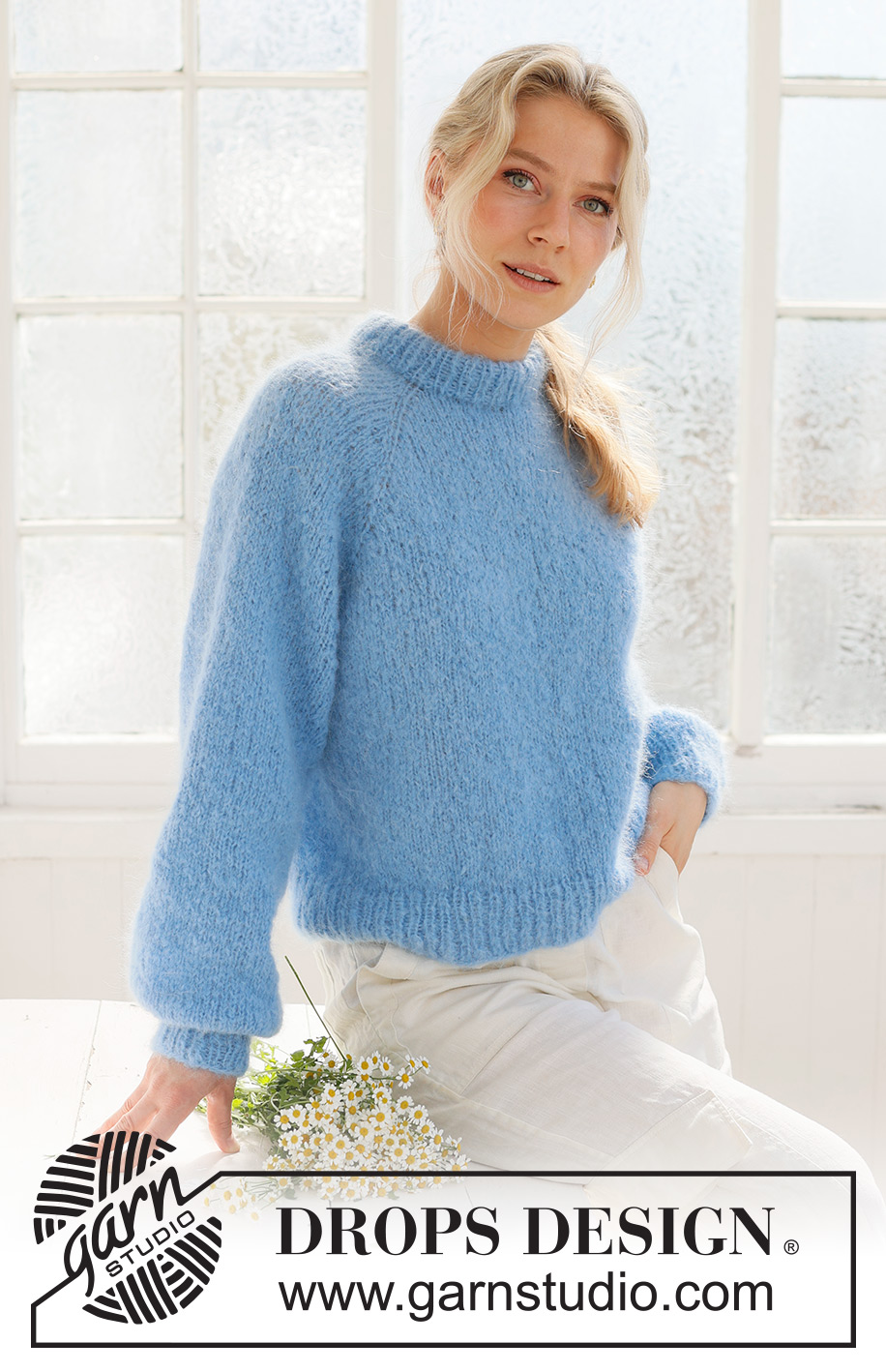
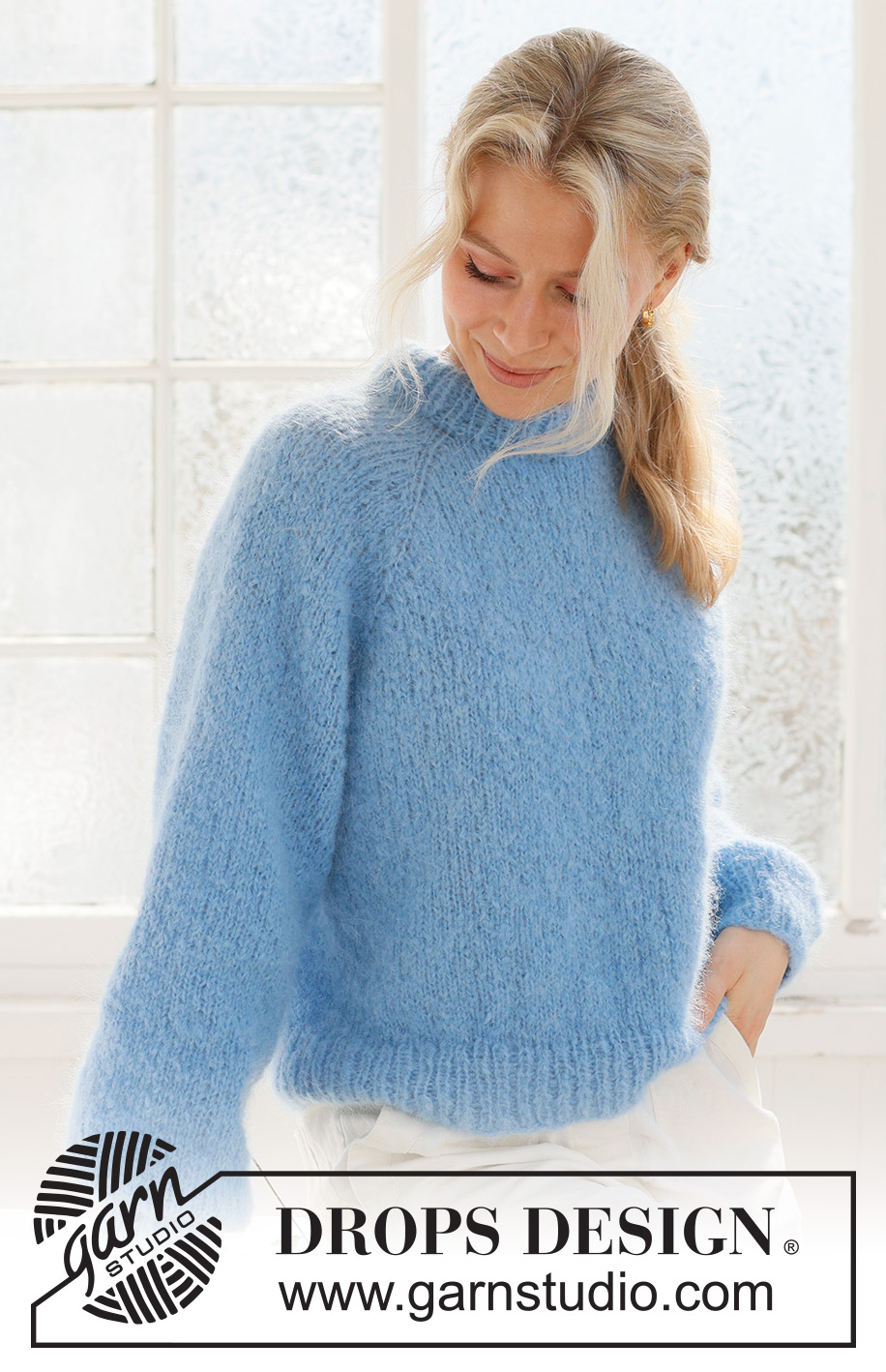
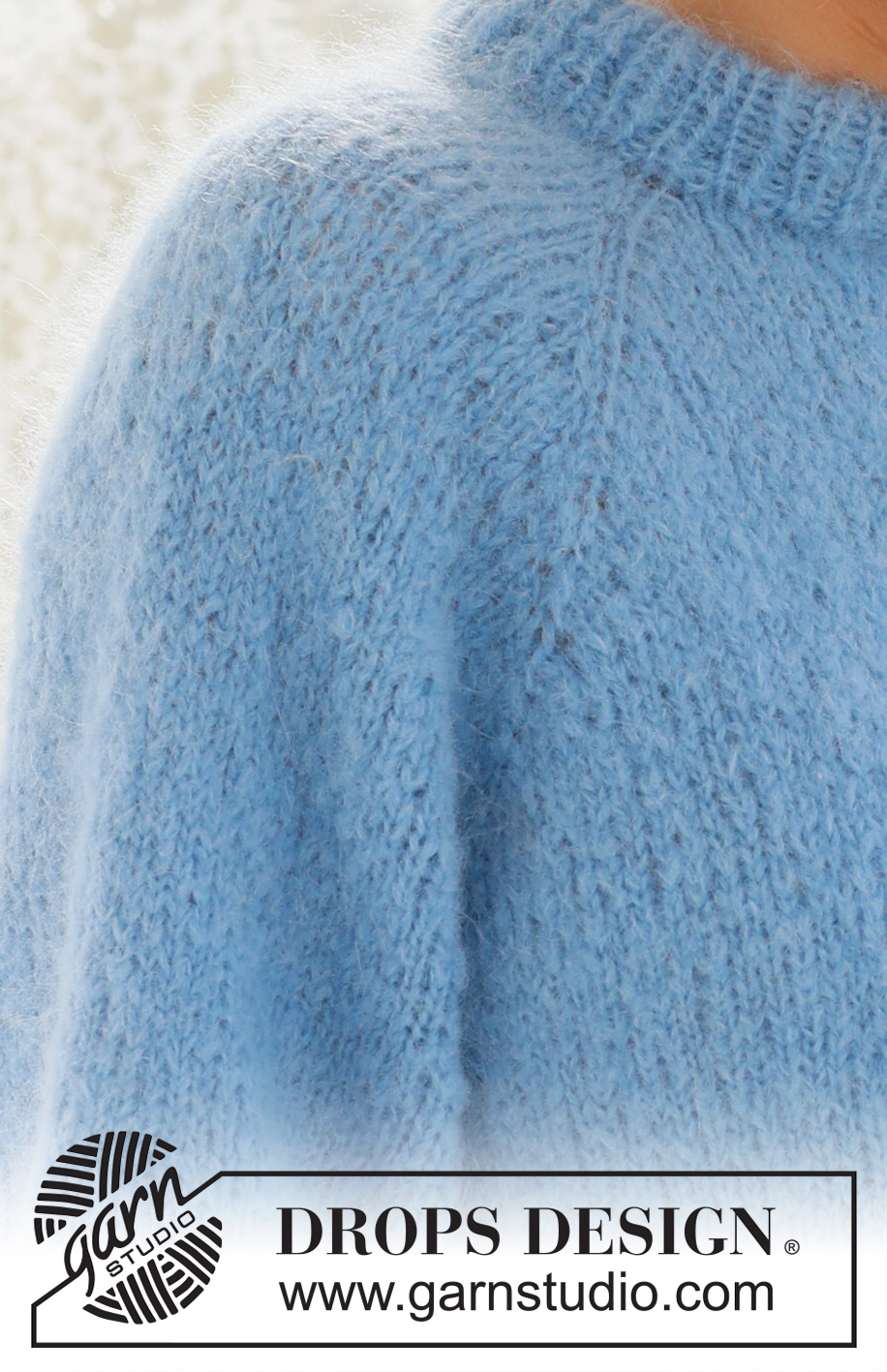


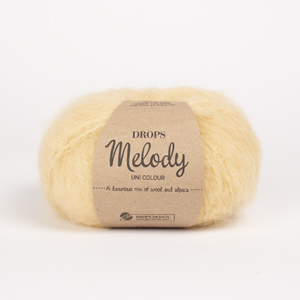

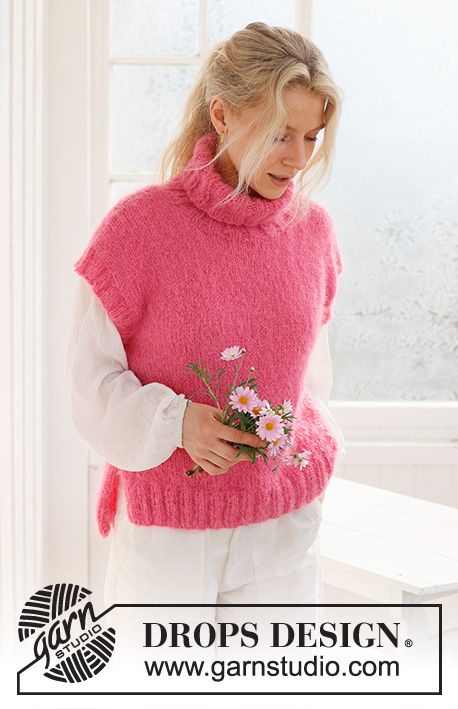











































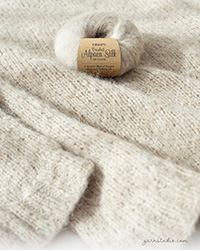
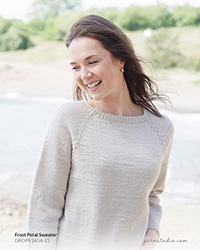

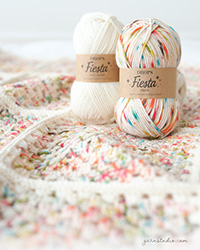

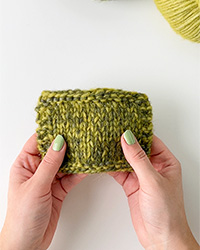
Post a comment to pattern DROPS 231-57
We would love to hear what you have to say about this pattern!
If you want to leave a question, please make sure you select the correct category in the form below, to speed up the answering process. Required fields are marked *.